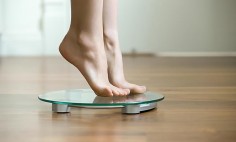The debate on whether you should have three large or several small meals during a day is still going strong, as you can see from a CNN article.
The general consensus seems to be that it doesn’t really matter as long as you consume a sufficient number of calories and get all essential nutrients from your meals. However, the matter of when exactly you should be eating your meals is much more clear. There are specific times when you should consume a meal that are determined by the human circadian rhythm. Planning your day accordingly can help to not only keep your health at its optimum level but also lose weight.
When to Eat Breakfast, Lunch, and Dinner?
- Breakfast: 6-10 a.m.
- Lunch: 10 a.m.-2 p.m.
- Dinner: 5-6 p.m.

That schedule seems quite simple, but there are many additional considerations you should make when setting a timetable for your daily meals. First of all, you need to understand that your mealtimes should be quite far apart from each other. For example, if you choose to eat breakfast at 10 a.m., you should only have lunch at 2 p.m.
If your main goal is weight loss, Daily Mail reports an interesting survey that names 7:11 a.m., 12:38 p.m., and 6:14 p.m. as thebest times for eating on a diet. However, there isn’t any scientific evidence to support such precise choices and many factors can influence these times. Therefore, you shouldn’t use this schedule as the ultimate guide if it’s inconvenient for you.
You also need to consider that some healthy diets call for specific mealtimes. For example, intermittent starvation plans might suggest skipping all meals one day or not to eat after specific hours. And science has proven that there are many health benefits to a ketogenic diet meal plan.
This means that your diet’s guidelines are the first thing to consider when you set the times for your meals and their frequency. The second thing to consider is your current lifestyle.
What is your personal schedule? Can you change it?
The answer to these questions will largely determine when you can have meals. It’ll be ideal to plan your day so you can have meals within the timeframe outlined above. However, many people today lead extremely busy lives and sometimes they have no opportunity to change anything about their schedules. This is when you need to consider going outside the traditional mealtime guidelines.
When to Eat Your Meals If You Can’t Fit the ‘Standard’ Times?
If you can’t have three meals as outlined above, you need to consider your activity levels first. The point of having a meal is to ensure it gives you energy to do the things you need to do. It’s also necessary to do something after you eat so you can burn the calories.
Using this principle, your mealtimes should be before your high-activity periods. It’s also best to either completely avoid eating or eat only a light meal before a period of minimal inactivity (sleep).
You can use the same guidelines if you choose to have more than three big meals a day. In this case, you need to time them so they provide you with small bouts of energy throughout the day to keep your blood sugar levels stable.
One rule is the same for any eating schedule: the more hours are between your last meal of the day and sleep, the better. If you work in shifts and sleep during the day, the rule still applies.
The point is to reduce your energy intake before the periods when you won’t be able to burn calories. However, it’s essential to consume an adequate amount of calories overall. Use these simple guidelines and you’ll be able to plan a healthy, even for weight loss.















